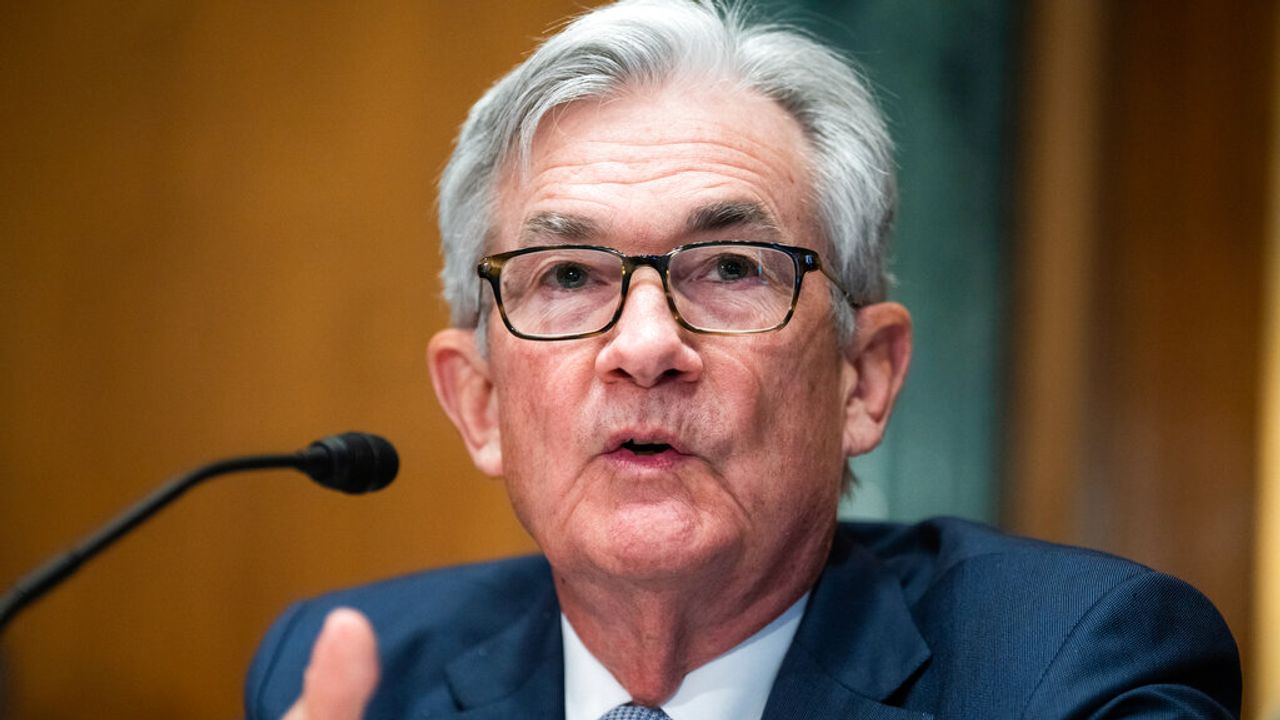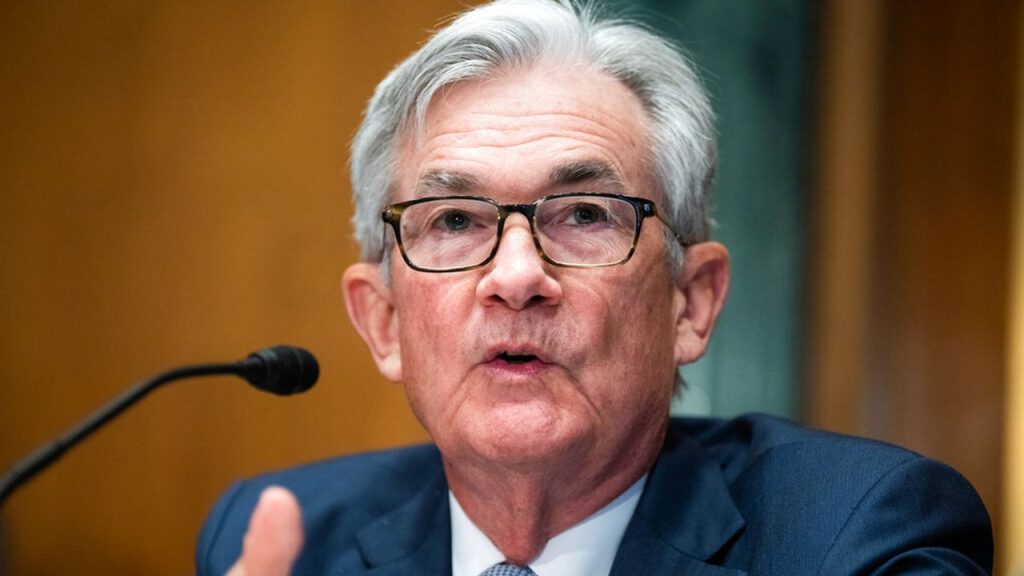
US Fed pauses interest rate hikes amid rising bond yields
By Nick Beams
Interest rate payments on US debt will grow as yields rise and budget deficit increases.
The US Federal Reserve has paused its interest rate hikes for the second meeting in a row and sent out some mixed signals about whether it will lift rates at its last meeting for the year in December.
In response to questions at his press conference, though not in his prepared remarks, Fed chair Jerome Powell indicated that risks were evenly balanced. That was taken by some market commentators as an indication that, while not officially announcing it, the central bank’s hiking cycle had come to an end.
On the other hand, Powell left open the door for a further rate increase, saying that given the “uncertainties we face the Committee is proceeding carefully.”
On the issue of the labour market, the key issue for the Fed in its so-called fight against inflation, Powell said the labour market remained “tight” but supply and demand conditions continued to come into “better balance.”
Nominal wage growth had shown “some signs of easing” and job vacancies had declined but, although the jobs to workers ratio had narrowed, “labor demand still exceeds the supply of available workers.”
One of the aims of its policy aims since it started raising rates in March last year, lifting them to their highest level in 22 years, has been to increase that supply by trying to slow the economy and create unemployment if necessary.
A key factor in the decision to keep interest rates on hold appears to be the recent selloff in the bond market which has sent the yield on the benchmark 10-year US Treasury bond close to 5 percent on occasions—its highest level since before the global financial crisis of 2008.
It is considered that the rise in interest rates in the bond market has similar effects to an increase in the Fed’s rate, meaning it could pull back somewhat.
Powell indirectly pointed to these considerations in his remarks.
“Financial conditions have tightened significantly in recent months, driven by higher longer-term bond yields, among other factors. Because persistent changes in financial conditions can have implications for the path of monetary policy, we monitor financial developments closely. In light of the uncertainties and risks, and how far we have come, the Committee is proceeding carefully.”
No doubt Powell had in mind the experience of last March when the fall in bond prices and the rise in yields (the two move in opposite directions) led to three of the four largest bank failures in US history when Silicon Valley Bank, along with two others, collapsed and the major global bank Credit Suisse had to be taken over.
Confirmation of the serious nature of the March crisis came yesterday when the head of the Swiss National Bank Jordan Thomas said its intervention was “crucial” in avoiding a “financial crisis” worldwide.
Against considerable opposition, the Swiss National Bank threw away previous agreements on the liquidation of major banks, wiping out bondholders while giving payments to stockholders, contrary to common practice, in organising the bailout.
“The SNB’s willingness and ability to provide liquidity was crucial in managing the acute crisis at Credit Suisse and thus avoiding a financial crisis with serious economic consequences for Switzerland and the rest of the world,” Thomas told an event in Bern, Switzerland.
Of course, none of these experiences were mentioned by Powell in his remarks on the ramifications of bond market tightening—that would contradict the official mantra that the banking system is “sound and resilient”—but it would have been one of the factors in the Fed decision not to add to that tightening by lifting rates.

While third quarter GDP rose at an annual rate of 4.9 percent, largely on the back of a surge in consumer spending, there are signs that the underlying trend in the US economy is a slowdown.
Powell said after a boost in the summer, activity in the housing sectors was “flattening out” and remained well below the levels of a year ago “largely reflecting higher mortgage rates” while higher rates “also appear to be weighing on business fixed investment.”
Evidence of a slowdown was contained in the latest purchasing managers’ index issued by the Institute for Supply Management. The index, which tracks factory activity, fell to 46.7 last month, a fall of 2.7 points from September. This was well below expectations of a reading of 49, with below 50 indicating a contraction. It is the 12th consecutive month the index has fallen.
The chairman of ISM’s business survey committee Timothy Fiore said of the six biggest manufacturing industries, only one—food, beverage and tobacco products—showed growth.
While the increase in bond yields meant the Fed could ease back on further hikes it is very much a two-edged sword.
The selloff on the bond market means that interest payments on government debt consume an ever-greater portion of its revenue. This is under conditions where there is increasing nervousness as to how much government debt financial markets can absorb. In other words, will there be a sufficient buyers for new bonds.
These concerns were reflected in another event yesterday—the announcement by the US Treasury of its plans to issue new bonds.
Normally this hardly rates a mention because the Treasury market is considered to be highly liquid, that is, even major moves have little effect. But this is no longer the case because, as a recent Fed report noted, liquidity in Treasury markets is “challenged” and so the announcement was carefully watched without causing any disturbance as took place in August.
As the Financial Times warned in a recent editorial, sharp shifts in financial markets pose risks “particularly when Treasury liquidity remains below historic norms.”
“Investors looking to lock in high yields may be reticent to buy if they think prices could fall further. The risk of sharp yield movements could also threaten institutions holding large bond losses and stoke distressed Treasury sales.”
It said the US had to exercise “fiscal prudence”—a call for spending cuts—and warned that high interest rates combined with “lax fiscal policy and political chaos” were a recipe for a vicious cycle of rising government yields. This was evidenced in Britain a year when the attempt by the short-lived Liz Truss government to fund tax cuts for the wealthy without spending cuts threw markets into chaos.
It warned that “if the US has its own Liz Truss moment, the damage will not be contained to its shores.”
The FT did not indicate where the spending axe should fall.
But the agenda of powerful sections of finance capital was laid out by billionaire investor Stanley Druckenmiller in comments made on the business channel CNBC yesterday.
The US government was “spending like drunken sailors” and entitlement programs that make up almost half of spending had to be cut, particular Social Security benefits for retirees. “I want to go after entitlements,” he said. “It’s where the money is. This generation has to take a cut.”
Right now, he continued, seniors were getting 100 cents on the dollar, and it was “not unreasonable” for that to be reduced.
But at the same time, articulating the program of war abroad and war against the working class at home, Druckenmiller said he was “actually happy” to see the government announcement of $106 billion of military support for Ukraine and Israel.
[This article was originally published by WSWS here on November 02, 2023]

